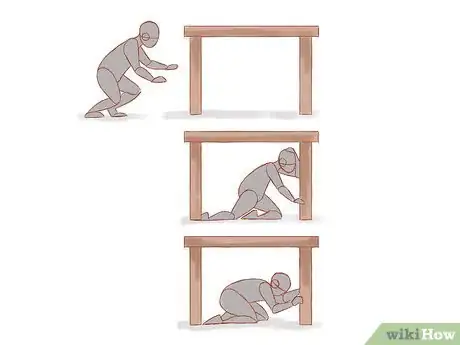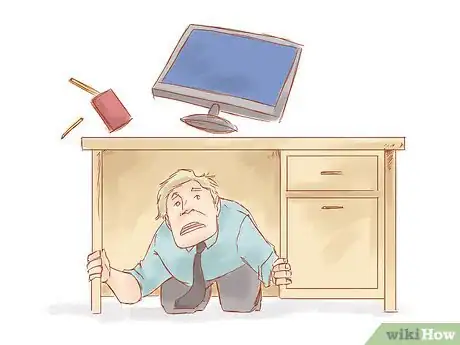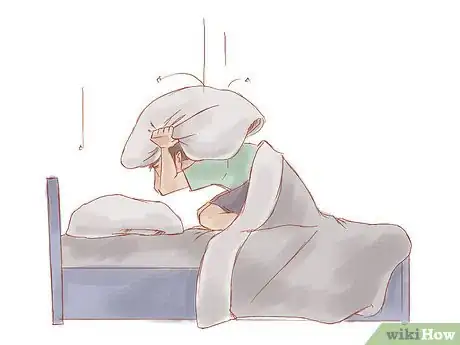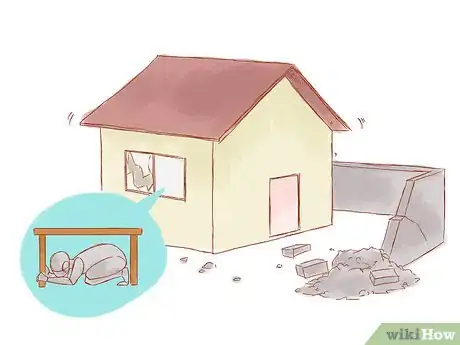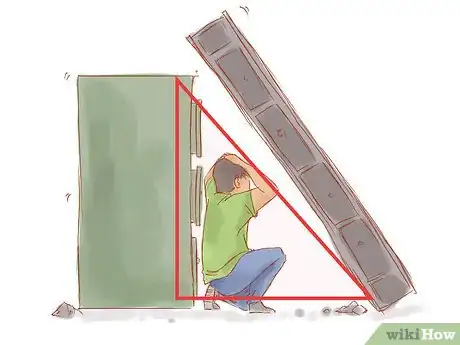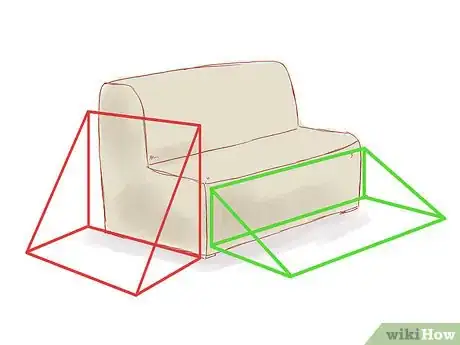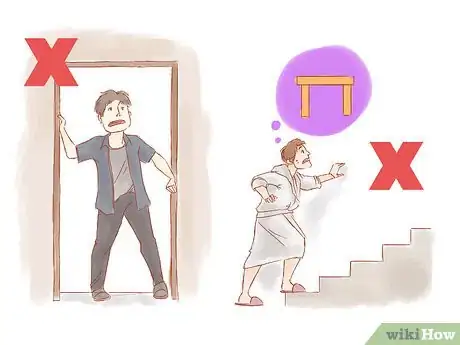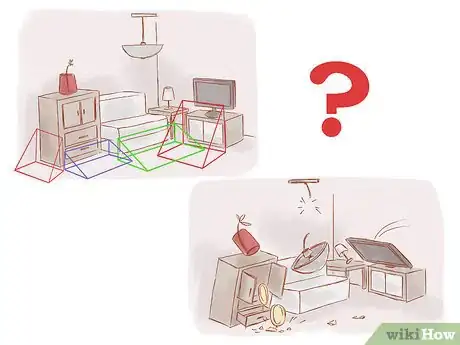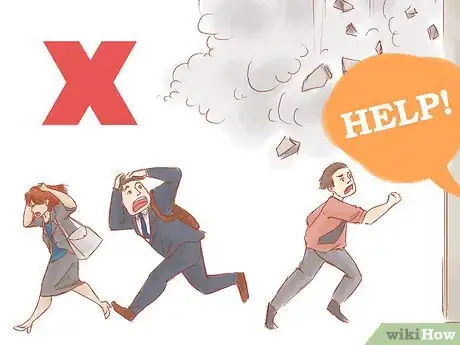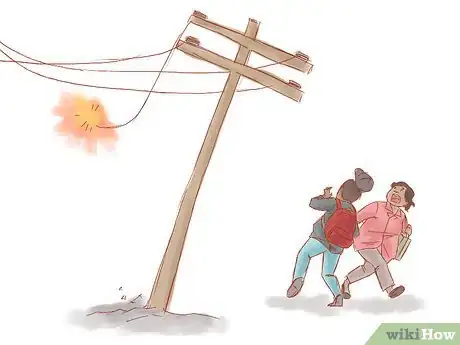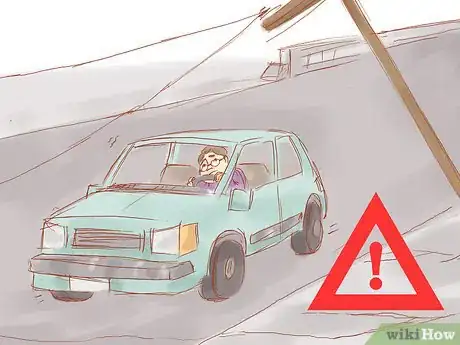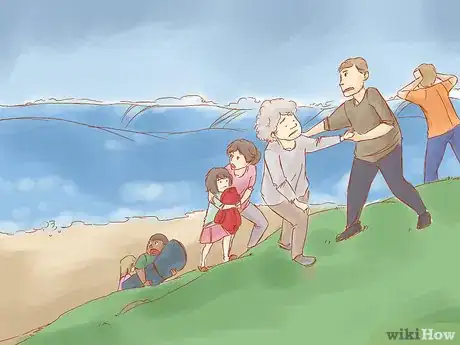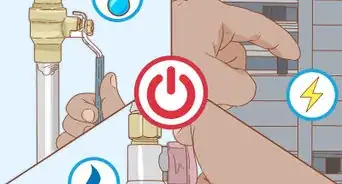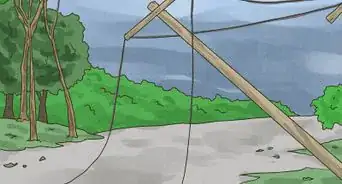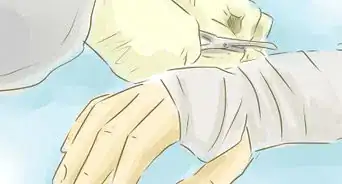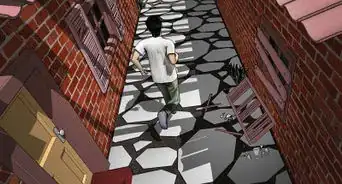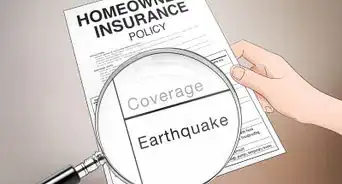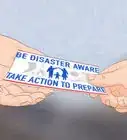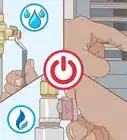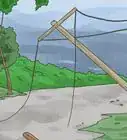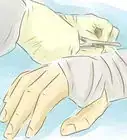wikiHow is a “wiki,” similar to Wikipedia, which means that many of our articles are co-written by multiple authors. To create this article, 80 people, some anonymous, worked to edit and improve it over time.
This article has been viewed 301,618 times.
Learn more...
Earthquakes happen when the earth's crust shifts, causing seismic waves to quake and crash up against one another. Unlike hurricanes or floods, earthquakes come without warning and are usually followed by similar aftershocks, although the aftershocks are usually less powerful than the quake. If you find yourself in the middle of an earthquake, there's often only a split-second to decide what to do. Studying the following advice could be the difference between life and death.
Steps
Dropping, Taking Cover and Holding On (Indoors)
-
1Drop to the ground. The drop, cover, and hold on technique is the cousin of the famous "stop, drop and roll" for fires. While it's not the only method of protecting yourself indoors during an earthquake, it is the preferred method of the Federal Emergency Management Agency (FEMA) and the American Red Cross.[1]
- Big earthquakes occur without much, if any, warning, so it's recommended that you drop to the floor as soon as it hits. A small earthquake could turn into a big earthquake in a split-second; it's better to be safe than sorry.
-
2Take cover. Get under a sturdy table or other piece of furniture. If possible, stay away from glass, windows, outside doors and walls, and anything that could fall, such as lighting fixtures or furniture. If there isn’t a table or desk near you, cover your face and head with your arms and crouch in an inside corner of the building.
-
Do not:
- Run outside. You're more likely to get injured trying to get out of the building than staying put.
- Head for a doorway. Hiding under a doorway is a myth. You're safer under a table than you are under a doorway, especially in modern houses.
- Run to another room to get under a table or other piece of furniture.
Advertisement -
Do not:
-
3Stay inside until it's safe to get out. Researchers have shown that most injuries happen when people try to change the place of hiding or when the place is crowded and everyone has a goal to get outside safe.
-
4Hold on. The ground may be shaking and debris could be falling. Hold on to whatever surface or platform you've gotten under and wait for the shaking to subside. If you were unable to find a surface to hide under, continue to keep your head shielded by your arms and tucked down low.
-
5Stay in a safe place. If you find yourself in bed while an earthquake strikes, stay there. Hold on and protect your head with a pillow, unless you are under a heavy light fixture that could fall. In that case, move to the nearest safe place.
- Many injuries are caused when people leave their bed and walk across broken glass with their bare feet.
-
6Remain inside until shaking stops and it is safe to go outside. Research suggests that many injuries occur when people inside buildings attempt to move to a different location inside the building or try to leave.
- Be careful when you do go outside. Walk, do not run, in case of violent aftershocks. Collect yourself in an area without wires, buildings, or crevasses in the earth.
- Do not use elevators for egress. The power can go out, causing you to be trapped. Your best bet is to use the stairwell if it's free. Plus, the elevator likely has a Seismic mode which stops the elevator and renders itself inoperable after an earthquake.
Forming the Triangle of Life (Indoors)
-
1Use the Triangle of Life method. This is an alternative to drop, cover, and hold on. If you can't find a desk or a table to duck under, you have options. Although this method is disputed[2] [3] by many of the world's leading earthquake safety officials, it could save your life in the event that a building you're in collapses.
-
2Find a structure or piece of furniture nearby. The triangle of life theory is that people who find shelter near, not under, household items such as sofas are often protected by voids or spaces created by a pancake collapse. Theoretically, a collapsing building would fall on top of a sofa or desk, crushing it but leaving a void nearby. Devotees of this theory suggest that sheltering in this void is the safest bet for earthquake survivors.
-
3Huddle in the fetal position next to the structure or piece of furniture. Doug Copp, the main proponent of the triangle of life theory, says that this safety technique is natural for dogs and cats and can work for you, too.
-
4Consider this list of what not to do in the event of an earthquake. If you can't find a safe place to duck nearby, cover your head and get into the fetal position wherever you are.
-
Do not:
- Go under a doorway. People under doorways are commonly crushed to death if the door jamb falls under the weight of the earthquake's impact.
- Go upstairs to get under a piece of furniture. Stairs and staircases are dangerous places to tread during an earthquake, as they could collapse or break without notice.
-
Do not:
-
5Know that the triangle of life method is unsupported by scientific findings and/or expert consensus. The triangle of life technique is controversial. If you find yourself with several options about how to proceed during an earthquake indoors, attempt the drop, cover, and hold technique.
- There are several problems with the triangle of life technique. First, it's difficult to know where triangles of life form, since objects in a quake move up and down as well as laterally.
- Second, scientific studies tell us that most deaths in earthquakes are linked to falling debris and objects, not falling structures.[4] The triangle of life is predominantly based on earthquakes that cause structures, not objects, to fall.
- Many scientists believe that it's also more likely to sustain injuries trying to move somewhere instead of staying put.[5] The triangle of life theory advocates moving to safe areas over staying put.
Surviving Earthquakes Outdoors
-
1Stay outdoors until the shaking stops. Don't try to 'heroically' rescue someone or venture indoors. Your best bet is to stay outside, where the risk of collapsing structures is diminished. The greatest danger exists directly outside buildings, at exits, and alongside exterior walls.
-
2Stay away from buildings, street lights and utility wires. These are the main risks of being outdoors when an earthquake or one of its aftershocks is in progress.
-
3Stop as quickly as possible if you are in a vehicle and remain inside. Avoid stopping near or under buildings, trees, overpasses, and utility wires. Proceed cautiously once the earthquake has stopped. Avoid roads, bridges, or ramps that might have been damaged by the earthquake.[6]
-
4Stay calm if you are trapped under debris. Although it may seem counter-intuitive, waiting for help is probably your best bet, if you find yourself trapped under immovable debris.
- Do not light a match or a lighter. Leaking gas or other flammable chemicals may accidentally light on fire.
- Do not move about or kick up dust. Cover your mouth with a handkerchief or piece of clothing.
- Tap on a pipe or wall so rescuers can locate you. Use a whistle if one is available. Shout only as a last resort. Shouting can cause you to inhale dangerous amounts of dust.
-
5Be prepared to face a possible tsunami if you are near a big body of water. A tsunami happens when an earthquake causes an extreme underwater disturbance, sending powerful waves towards shores and human habitation.
- If there's just been an earthquake and its epicenter is in the ocean, there's a good chance you'll have to be on the lookout for tsunamis.
Community Q&A
-
QuestionWhat can I do if I am a preteen alone with a baby?
 Community AnswerIf you are with the child at the time of the earthquake, ODPEM advises using the Stop, Cover and Hold On technique, but with one hand holding the baby close to your chest and the other holding on to the object you are taking shelter underneath.
Community AnswerIf you are with the child at the time of the earthquake, ODPEM advises using the Stop, Cover and Hold On technique, but with one hand holding the baby close to your chest and the other holding on to the object you are taking shelter underneath. -
QuestionWhy do you have to go under a something during a earthquake?
 Community AnswerTo protect yourself from things dropping on you. For example, if you are under the kitchen table and glasses and plates fall off the sideboard, they won't hit you. The object may move in a stronger quake, so make sure you are holding on.
Community AnswerTo protect yourself from things dropping on you. For example, if you are under the kitchen table and glasses and plates fall off the sideboard, they won't hit you. The object may move in a stronger quake, so make sure you are holding on. -
QuestionWhat should I do if on a plane on the ground? Would I be safe?
 Jo WCommunity AnswerThe plane will rock with the movement of the ground, and you would be OK. Luggage lockers may come open above your head, so cover your head and wait until the shaking stops.
Jo WCommunity AnswerThe plane will rock with the movement of the ground, and you would be OK. Luggage lockers may come open above your head, so cover your head and wait until the shaking stops.
Warnings
- Be aware that some earthquakes are actually foreshocks and a larger earthquake might occur.⧼thumbs_response⧽
References
- ↑ http://www.time.com/time/specials/packages/article/0,28804,1953379_1953494_1958235,00.html
- ↑ http://www2.bpaonline.org/Emergencyprep/arc-on-doug-copp.html
- ↑ http://www.scoop.co.nz/stories/AK1009/S00266/discredited-earthquake-safety-advice-circulated.htm
- ↑ http://eqseis.geosc.psu.edu/~cammon/HTML/Classes/IntroQuakes/Notes/earthquake_effects.html
- ↑ http://www.redcross.org/prepare/disaster/earthquake
- ↑ http://www.ready.gov/earthquakes
About This Article
To react during an earthquake, start by staying as calm as possible. If you're in bed, stay in bed and protect your head with a pillow. If you're inside of your home or another building, drop to the ground immediately and find cover under a table or doorway. If you're in a car, stay in the vehicle and find a place to stop as quickly as possible that's away from large trees, buildings, and utility wires. For tips on what to do if you're outdoors when an earthquake strikes, read on!
